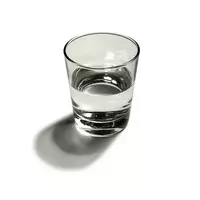Ethyl alcohol

Ethyl alcohol is a clear, colorless liquid that has a distinctive odor, a burning taste and is the final fermentation product. It is contained in almost all alcoholic beverages, which, depending on the percentage concentration of ethyl alcohol, are divided into low alcohol (from one and a half to eight percent of alcohol), medium alcohol (nine to thirty percent), strong (31-65%) and high alcohol (up to 96 percent). The former include drinks such as kvass and beer, the latter are represented by liqueurs, liqueurs and grape wines. As for stronger types of alcohol, these are vodka, cognac, whiskey, rum, brandy and others. And all that is higher is pure ethyl alcohol, which combines perfectly with water in any ratio and is distinguished by a rather low boiling point (7
8. 3 degrees), and freezing - minus 117 degrees Celsius.
Thanks to such properties of ethyl alcohol, this product is sometimes simply indispensable in many areas of human life, in particular, cooking. So, it is used in the manufacture of most strong alcoholic beverages. In addition, it itself is contained in a number of liquid products, albeit obtained by fermentation, but not classified as alcoholic. These include kvass, kefir, non-alcoholic beer, kumys and others. Interestingly, the content of ethyl alcohol in fresh kefir is almost zero, while in more aged it can reach one percent! In kvass there can be up to
1. 2% alcohol, and in kumys from 1 to 3% (in strong sometimes it reaches
4. 5%).
In addition, ethyl alcohol is an excellent solvent for food flavors. It is often used as a preservative in the manufacture of bakery or confectionery products. This alcohol is even registered as a food additive and has its own name - E1510.
Types of ethyl alcohol
Depending on the raw materials used, there are quite a few types of ethyl alcohol, the most common of which are potato, wheat, wood, rye, corn, oat, millet, beet and synthetic.
All of them refer either to food or technical ethyl alcohol. It is clear that the latter is not eaten (this can lead to sad consequences).
In addition, depending on the degree of purification, 4 types of ethyl alcohol are distinguished: first grade, highest grade, extra and luxury. The latter is considered the cleanest and is used in the manufacture of elite and expensive alcoholic beverages.
Composition of ethyl alcohol
S2N50N is a general chemical formula that reflects the composition of ethyl alcohol, has been known to many since school. It was installed in 1807, and then underwent some changes. Only after attempts to synthesize ethyl alcohol brought long-awaited results, a structural formula was proposed, which was listed as SN3SN2ON. But in the end they decided to leave the original version.
Damage to ethyl alcohol
Experts say that when using small doses of this product, no adverse consequences for the body should be expected. But with regular excessive use, the harm of ethyl alcohol is fully revealed: it becomes a poison that can cause loss of consciousness and even death. In addition, the constant abuse of any alcoholic beverages is addictive - alcoholism.
ethyl alcohol 222 kCal
Energy value of ethyl alcohol (Ratio of proteins, fats, carbohydrates - ju):
Proteins: 0 g (~ 0 kCal)
Fats: 0 g (~ 0 kCal)
Carbohydrates: 0 g (~ 0 kCal)
Energy ratio (b | y): 0% | 0% | 0%
 Español
Español Français
Français Português
Português Русский
Русский 简体中文
简体中文 繁體中文
繁體中文 日本語
日本語 한국어
한국어 العربية
العربية Türkçe
Türkçe Қазақ
Қазақ Deutsch
Deutsch Italiano
Italiano Українська
Українська
